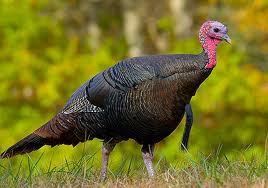You know how it feels when you’re falling in love? At first, it’s all hot and heavy and you can hardly think of anything but being with the other person. You live them, breathe them, you almost want to EAT them! But things eventually steady. The boil, though still burning, simmers down and you start to see stuff you hadn’t seen before. And often it’s these subtleties that’ll either END IT or enchant you all the more.
wildlife
A turkey named Wilbur.

A normal person who moved into a house where wild turkeys wandered the backyard might be inclined to ignore them until they went away. A normal person, once these turkeys disappeared, might describe the parting as fortunate. But since moving into our house, replete with flock of wild turkeys, my family and I have done our darnedest to bond with these big birds.
Turkey Floats

In yesterday’s post about the dead turkey, I mentioned the males are beginning to display. So I thought I would elaborate with some photos.
If you are from Philly, then you know who the Mummers are. If you are not, then you are missing out! The Mummers are a Philly tradition. They are a collective of local neighborhood clubs composed historically of men; nowadays there are lots of women too. These guys & gals get together over the course of each year to put together elaborate costumes and routines for an annual New Year’s Day parade. Some of the Mummers play instruments, others are strictly theatrical. But all of the costumes are over the top. Think MORE is MORE.
Here is an elaborately costumed Mummer.
And here is one of the male turkeys in full display.
Being from Philly, I can’t help but think of the Mummers. The male turkeys glide across the yard like mini parade floats. They strut, they cluck, it’s crazy. They want these lady turkeys SO BAD! But the girls, quite honestly, don’t seem to want anything to do with them. I saw one female (she must be one of the hottie turkeys b/c the males were surrounding her, strutting & bobbing like mad) she practically flew across the yard to get away from them. And seriously, can you blame her? Just look at those big red sacs – can you imagine some dude following you round Target w/ a dangly scrotum stuck to his face?! YIKES!






